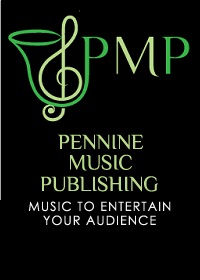2008 European Brass Band Championships - Test piece review
28-Apr-20084BR looks at Hakon Berges Brass Blot - a piece of intrigue and intellect.
 Forget the rather onomatopoeic title – ‘Brass Blot’ by Hakon Berge is set to provide the Championship Section bands this year with an interesting and intriguing test of musicianship.
Forget the rather onomatopoeic title – ‘Brass Blot’ by Hakon Berge is set to provide the Championship Section bands this year with an interesting and intriguing test of musicianship.
Those who despair of the thought of another ‘worthy’ European test piece – which is in reality, code for ‘..it’s rubbish, and we never want to play it again…’, may not be totally converted by this year’s offering from the distinguished Norwegian composer.
But then again, they won’t be getting themselves ready with the green ink to write letters of incandescent rage to the Editor of the Daily Mail, in the belief that ‘Johnny Foreigner’ has once again usurped another bastion of British tradition.
Texture and colour
What we get here is a very coherent, work of texture and colour, elegantly laid out in a transparent and easily understandably manner. There is nothing revolutionary about it (no blowing into bottles or playing from different parts of the hall), but it isn’t over familiar either (the composer has asked technically questions of key solo lines without ever asking them to jump through the usual pyrotechnical hoops to find the answers).
The ‘Blot’ of ‘Brass Blot’ refers to the Norwegian meaning of ‘offering’, and for the composer it signifies as he says; ‘ a kind of skewed look at the contest – those who offer most to the gods, in this case the judges, will win.”
The question is though – What on earth do they in fact have to offer up?
The answer (or answers) appears to be the ability to provide the clarity of musical thought to the precise musical architecture of the piece.
Ensemble work
It is very much an ensemble work, and although there are extended solo contributions for the euphonium and solo cornet in particular, they form musical synapses, bridging identifiable themes together.
Those themes are identified right at the start of the work with the opening flugel voice quietly announcing the kernel from which much of the subsequent material is derived. It sounds a touch mystical, melodic yet exotic – a bit like ‘Syrinx’ by Debussy.
The mode is one of question and answer: The flugel poses the solemn opening motif which is in turn answered and developed through slight variance by first, the euphonium and growing cornets. The question is reiterated again in a more pleading manner before the textures and complexity of the answers grow (there are some wonderful accumulative rhythmic patterns to listen out for, which appear simple on the score but if played correctly become precisely animated).
The percussion has much to do throughout the work (4 players are required) and the writing for all four is effective and integral to the development of the music.
With the opening section gently closing a new variation on the original idea emerges at rehearsal 42 – marked Poco piu mosso (crotchet = 69). The tempi markings are of vital importance, as later in the work a reprise of original material is taken at an increased tempo marking. The relationship between the opening marking here and that later (138) is therefore critical. Take the first too fast and the latter becomes virtually unplayable.
Skilful writing
The skilful writing through this section may at first appear easy to follow in the score, but on closer inspection it is not the horizontal lines, but the vertical ones in its construction that hold the key. Everything is built in small steps and there will be a huge premium on ensemble accuracy and balance.
The following euphonium bridge leads into a key moment in the piece and the almost indiscernible tempi change into a cool jazz inspired section of razor sharp precision accompanied by textured percussion writing. Hit the ‘groove’ so to speak and it sounds fantastically cool and sophisticated – too quick it becomes a mish mash; too slow it becomes a plodding bore.
Clarity and precision
Clarity and precision are the essential elements once again with clever use of occasional moments of dislocation that enhance the increasingly dramatic spikey mood. With the dynamic markings clearly defined and never over written smaller motifs can appear like little rays of breaking sunshine (the flugel at rehearsal marking 137 for instance) before we enter a much more openly aggressive section of writing at rehearsal mark 144. This more discordant writing continues with detailed motif work in all areas of the ensemble accompanied by a vibrant percussive backbeat.
The slowest section of the work is now revealed – once more with that basis from the original motif from the flugel. An extended solo for cornet asks for classy rubato playing before the work delves into a darker section, almost sounding like a Negro spiritual or pastiche Gershwin ‘Porgy & Bess’.
Critical control
Cleverly though, Berge never lingers too long without a sense of movement and well-observed thematic development, and we are led with purpose to the final section that increases in complexity and drive but only successfully if the MD has been able to capture the critical control of tempi. 289 onwards will reveal if the band and the MD have done it right or not.
Here the writing is familiar and reprised but the tempi is quicker (a gear shift up – not a foot down hard on the accelerator though) and if timed right the sense of excitement allied to razor sharp execution will see the best bands head towards the intriguing end in full control.
Short supply
That intriguing end allows the band to almost come to a halt without ever losing the sense of pulse – a neat trick only the best can pull off, to round off a very enjoyable test of musicianship and for all concerned.
Brass Blot is something a little different – although nowhere near as left field as some offerings we have had in years past. It is a work of intelligence and understanding – two attributes that come the adrenaline filled anxiety of the contest stage can sometimes be in short supply.
Berge says that ‘Brass Blot’ should reward those who offer most to the gods. And with a great deal depending on what the MDs can find from the score, he may well be right.
Iwan Fox















